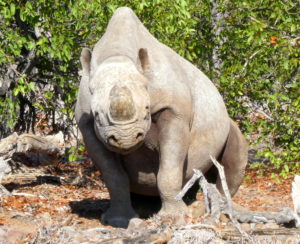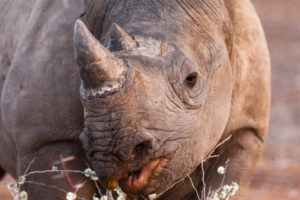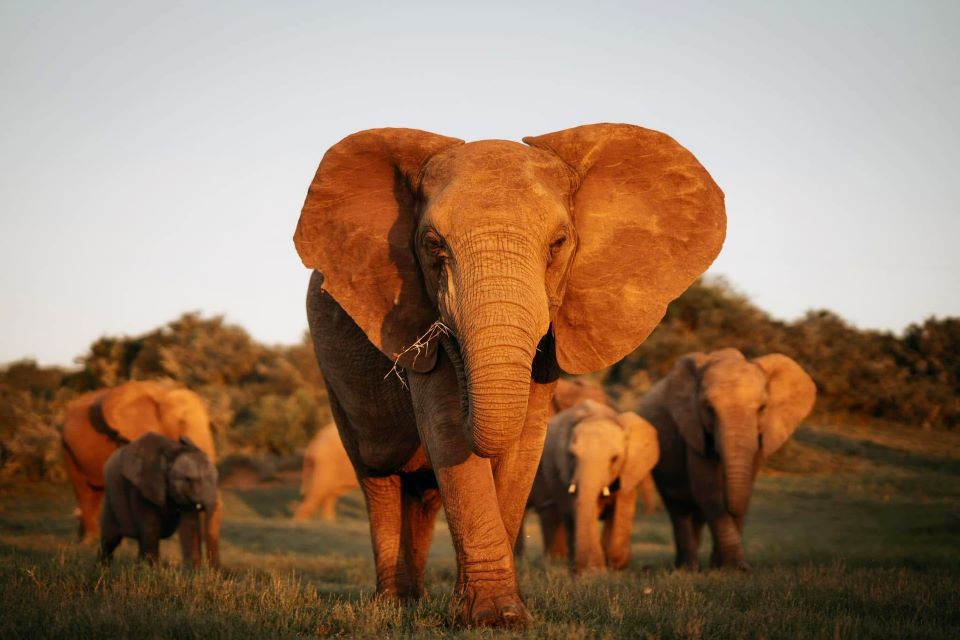
Pinguine am Kap – ein Rendezvous mit charmanten Frackträgern.
29. Januar 2017
Neue Safari Aktivitäten in einem Wildreservat in Südafrika
20. Februar 2017They are the last ones of their kind and truly fascinating: Africa’s black rhinos.
Unfortunately, the grey giants are often misunderstood and have a reputation for always being grumpy. But as a study by the WWF shows, although black rhinos are solitary, they socialise with other black rhinos much more than was previously known. Especially the females like to interact with each other, and since they have overlapping home ranges, a number of females will often get together. Sometimes males also socialise with them. The animals might spend a day or two together, before going their separate ways. We can’t even begin to imagine what is being chatted about during these gatherings!
An BBC documentary shows a group of black rhinos gathering at a waterhole at night. The footage shows night-time liaisons involving kisses, cuddles and a level of social interaction previously unknown in the species. The reason why we still don’t know a lot about the social life of rhinos and their interactions with each other, is because most of this behaviour takes place at night when they are active.
Due to various research,- such as the one conducted by WWF- we have a good insight into the lives of these endangered animals. They are characterised by distinctive characters with various temperaments. Some animals are very relaxed and don’t mind being followed, while others will run towards any disturbance and some people previously have had to climb a tree and wait there until the black rhino moves off. Trackers and guides from conservation groups such as the Desert Rhino Trust, have been doing vital work to learn more about the endangered rhinos and to prevent poaching. They track the rhinos on a daily basis, hence getting to know their territory, routine as well as the animals’ character; and by keeping an eye on the rhinos they make it more difficult for poachers.
Learn more about the work of the Desert Rhino Trust and how you can be part of it.
Sadly, the curious heavyweights are still highly endangered. Only 5,000 black rhinos remain in Africa. Poaching continues to be the rhinos’ biggest threat, since there continues to be a high demand for their horns on the Asian market. Due to that demand, the black rhino’s population declined by 96% between 1970 and 1992. Therefore, the animals still depend on conservation work to protect them from poachers such as relocating the rhinos into private reserves or rhino trackers, who keep an eye on them.
In 1994, a rhino conservation programme was founded in Namibia and a German- Namibian wildlife farm took part as one of the firsts in the Custodian Black Rhino Conservation Project, taking in state-owned black rhinos during the pilot phase of the project. With Elela Africa, you can track the black rhinos in the wild and learn more about the Custodian Black Rhino Project. Further, your stay will contribute financially to the project.
Go rhino tracking with the trackers of the Desert Rhino Trust or participate in rhino conservation at a private wildlife farm in Namibia.
[imic_form form_email=““ form_title=“Please contact us for further information.“]









